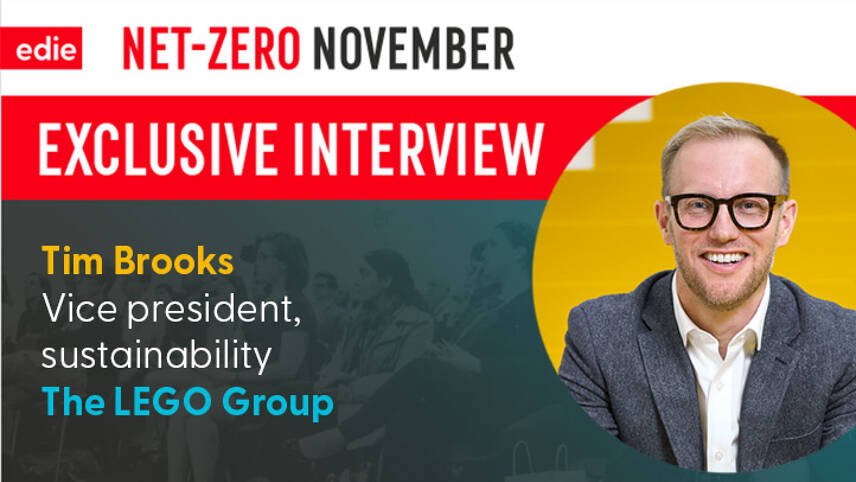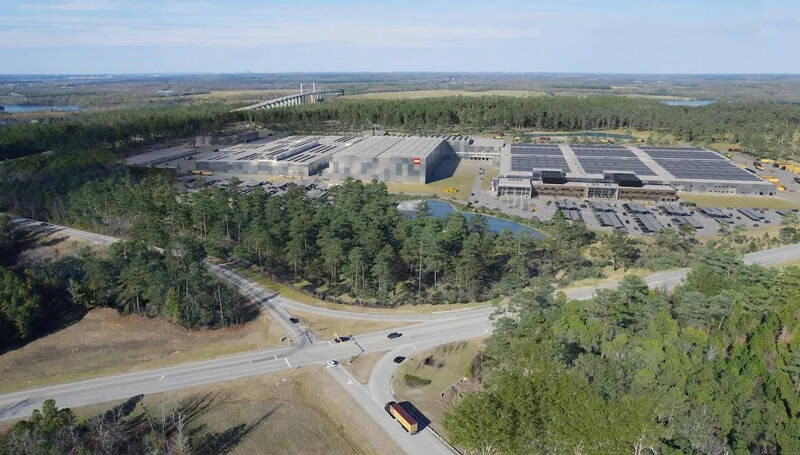Register for free and continue reading
Join our growing army of changemakers and get unlimited access to our premium content

The toy industry is probably not the first that springs to mind when thinking about sustainable business. According to the UN, the industry uses more virgin plastics in its products on a revenue basis than any other sector.
For most parents, the most visible environmental issue with the industry is, therefore, waste. But, as Brooks explains, the use of virgin plastics for toys also comes with a climate impact. Calling edie from Lego’s headquarters in Billund, Denmark, he explains that plastics and cardboard account for around a third of the company’s overall emissions footprint.
“It won’t be a surprise to hear that a lot of our emissions come from the goods, products and services we buy – this is true for a lot of manufacturers,” Brooks summarises during the discussion, held as part of edie’s Net Zero November.
It turns out that eliminating waste and reusing products is the most impactful way to tackle this climate. According to Brooks, reusing a set of Lego bricks can result in an 80% reduction in lifecycle emissions.
“A significant area of exploration for us is how we bring bricks to more children without necessarily using new bricks,” Brooks says. Lego launched its ‘Replay’ initiative in the US, to redistribute bricks, in 2019. It has since been expanded to Canada and has been accessed by more than 199,000 children. Launches in further markets are planned for the coming months and years.
Material innovation approaches can also tackle these emissions. Lego sees a reduction of lifecycle emissions of around 20% by switching a set of bricks to bio-based materials – as it has done for more than 150 elements. The reduction is 40% when comparing recycled plastics with virgin plastics. Lego is aiming to make all elements with more sustainable materials by the end of the decade.
Energy evolution
Work on creating a more circular economy and procuring lower-emission materials continues at Lego and will be important to ensuring that the business meets its science-based climate targets. Set in 2020, the targets are verified in line with a 1.5C temperature pathway by the Science-Based Targets Initiative (SBTi). The target is to reduce absolute emissions across all scopes by 37% by 2032, against a 2019 baseline.
One environmental issue where Lego is already regarded as a leading company is increasing the world’s renewable energy generation capacity. The company’s latest sustainability report revealed that it doubled installed onsite solar capacity year-on-year in 2021, installing major new arrays across sites in Mexico, China and Hungary.
“We put onsite solar on every factory and every building where it makes sense and where we can get a good carbon return,” says Brooks. “It is really about carbon return for us; this is the number one, rather than the financial return.” Lego has notably introduced a shadow carbon price within the past 24 months.
The only buildings where Lego does not host onsite solar, Brooks explains, are at stores and offices where there are practical barriers, such as stores being inside a mall owned by another company.
RE100 member Lego has notably been 100% balanced by renewable energy since 2017. When many other companies make this claim, they mean that they purchase energy through tariffs backed by renewable energy guarantee of origin (REGO) certificates, which come with a whole host of concerns around accounting, credibility and real-world impact. For Lego, the term entails matching its overall levels of energy consumption and renewable energy generation.
Brooks explains: “Even when we own assets through Kirkbi (Lego’s parent company, which invested in its first asset, a wind farm, in 2012), they still generate a certificate, which we still retire off the back of the assets. I think we’ve always been clear, from the beginning, that we want to provide additionality and this is still our mantra.
“Of course, certificates and power purchase agreements (PPAs) also form part of the mix to make sure we can get the balance right. But, first and foremost, we ask whether we can put assets on our own buildings and land and whether we can connect them directly. We know and believe this is the right thing to do. Then, if we can’t do those things, we ask how we can stimulate the market, how we can invest in assets that did not exist before.”
Carbon-neutral factories
With this in mind, Brooks and his team guide Lego’s approach to sustainable energy through a hierarchy. The first ports of call are not using energy at all and using energy more efficiently – work which the company has been reporting on since 2006.
The next step is onsite generation, then owned offsite generation. Finally, PPAs come into the mix.
Brooks explains that having onsite solar is “now a factory standard” for the company. Most existing factories have been fitted with solar panels and, going forward, all new facilities will include solar in their design. Lego is notably in the process of creating a $1bn new factory in Vietnam’s Binh Duong Province, where ground was broken this week and production is due to begin in 2024. Work is also underway on a second $1bn factory in Virginia, USA, where production will start in late 2025.
The intention is to have both factories being carbon-neutral in operation and for sustainability learnings from the facilities to be applied across the group. They will both feature rooftop solar and neighbouring ground-mounted arrays.

Pictured: An artist’s impression of the facility in Virginia
Brooks summarises: “There’s definitely a story of evolution. Rightly, ambitions on climate are increasing. Standards are increasing. We want to show the very best practice and be ahead of the game.”
Carbon neutrality in operations is, Brooks explains, essentially an energy calculation. And, due to the intermittent nature of renewable energy generation, the energy needs of the factory and the output of the solar panels will not always balance out. Brooks believes that energy storage is, therefore, the “next frontier” for Lego’s work on sustainability and that “efficiency is definitely the watch word”.
Another frontier is achieving carbon-neutrality not only in operations, but across the building life-cycle. Ahead of COP26 last year, the World Green Building Council updated its Net Zero Carbon Buildings Commitment to include new requirements on addressing embodied carbon. The changes come into effect in January 2023. Some GBCs, including the UK’s, had moved earlier on this issue.
Click here to access all of edie’s Net-Zero November content.


Is much attention being paid to energy storage?
Would not this area have significant potential?
I am simply ignorant of the technology in this area, is much attention being paid to this matter?
Richard Phillips